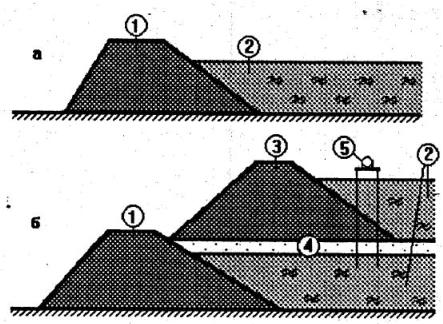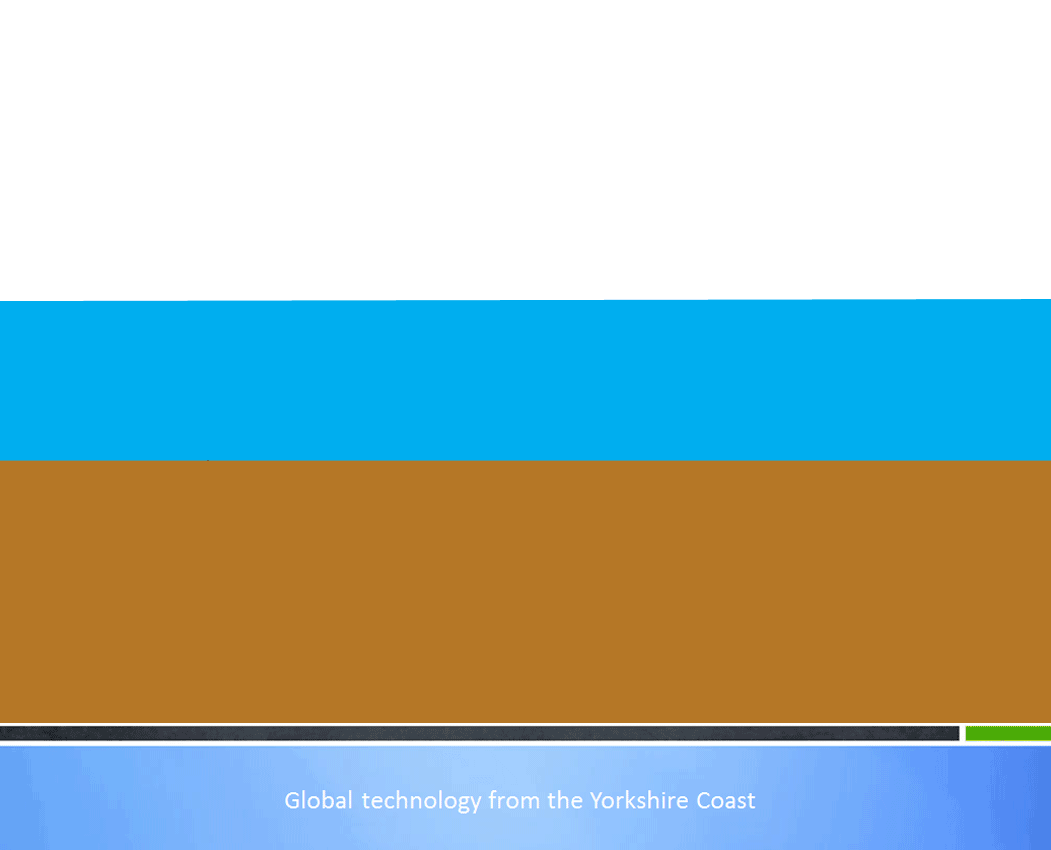


© Greenstick Enerygy Limited 2019 website design by Geoffrey Miller : www.flamboroughmanor.co.uk



Fig.1 Nordsee Luftbilder project
The Greenstick Method
Fig.2 the existing method of creating embankment dams using reclaimed
soil where, 1 = earthen dam; 2 = reclaimed pulp; 3 = dam reclamation 2
nd
layer; 4
= draining layer; 5 = slurry pipeline

The Greenstick Wall Technology, as previously described,
may be used in the creation of artificial territory to be
utilised for commercial gain or for using the newly formed
landmass for environmental and natural purposes. The
Greenstick wall system is less invasive than traditional
methods of land reclamation and, due to the lightweight
nature of the simple design, likely to be a quicker and less
expensive option.
The image of the Nordsee Luftbilder project (Fig 1) shows an
example of an existing method of creating artificial territory
where the gap in the structure allows the ebb tide to escape
whilst retaining as much of the silt as possible within. A
Greenstick wall could replace this method and function
without need for the gap. By sloping the walls at an
appropriate angle, the ebb tide would be able to flow freely
over the top of the structure whilst more of the silt would
remain inside, thereby speeding up the process, saving both
time and cost.
Creation of Artificial Territories
for commercial or environmental use
Less environmentally damaging disposal of dredging soil
It is well known that cleaning the bottom of a river or estuary by dredging
and dumping the soil at sea is environmentally damaging, primarily because
the discharged slurry is spread by waves and currents for tens of kilometres,
destroying essential sea bacteria through deprivation of oxygen. It is also
financially costly, given that the soil has to be transported from the site to
the sea by land vehicles or sea vessels both of which incur the additional
costs of crew, fuel and time.
Since the volume of repairs and new digging in ports and channels is
increasingly annually, so the costs, both environmentally and financially, will
also increase if the dumping of dredged soil in the sea continues.
The Greenstick wall technology can be used in the development of a more
cost effective and environmentally sound solution, that being the adoption
and improvement of the “pre-load” method where dredged soil can be
utilised on site and retained via the Greenstick wall.
Greenstick wall technology can be used to
accelerate reclaimed soil consolidation and is
likely to be significantly cheaper and quicker
than the existing method of creating soil
dams with bulldozers by using the pre-load
method, as shown at Fig.2.
The pre-load method relies on a layering
system where each layer is left to drain
before a further layer is added and so on.
In contrast, the Greenstick wall can be built up to retain the soil, intact, while still allowing excess water to drain,
creating a solid earth mass, as shown at Fig.3.

Fig.3 Proposed Greenstick Wall method where the reclaimed soil is held in place using Greensticks
combined with FRP panels
Where 1 = Greenstick piles; 2 = Pivoting adjustable shafts; 3 = FRP Panel;
4 = Permeable or non-permeable membrane; 5 = Reclaimed pulp.
A = Starting water level; A-A1 = Tidal range
The best way to protect the coast line is to hold the sea back
using reclaimed land.
Firstly, a water proof or porous membrane is deployed, the
exceptionally strong Greenstick walls are then built to produce the
desired territory - pier, port and marina. Dredging operations
complete the territory without the current environmental impact of
deoxygenating and pollution in the vicinity.

Please left click the screen above to play or right click for further options, including Full Screen (“Esc” to cancel)















